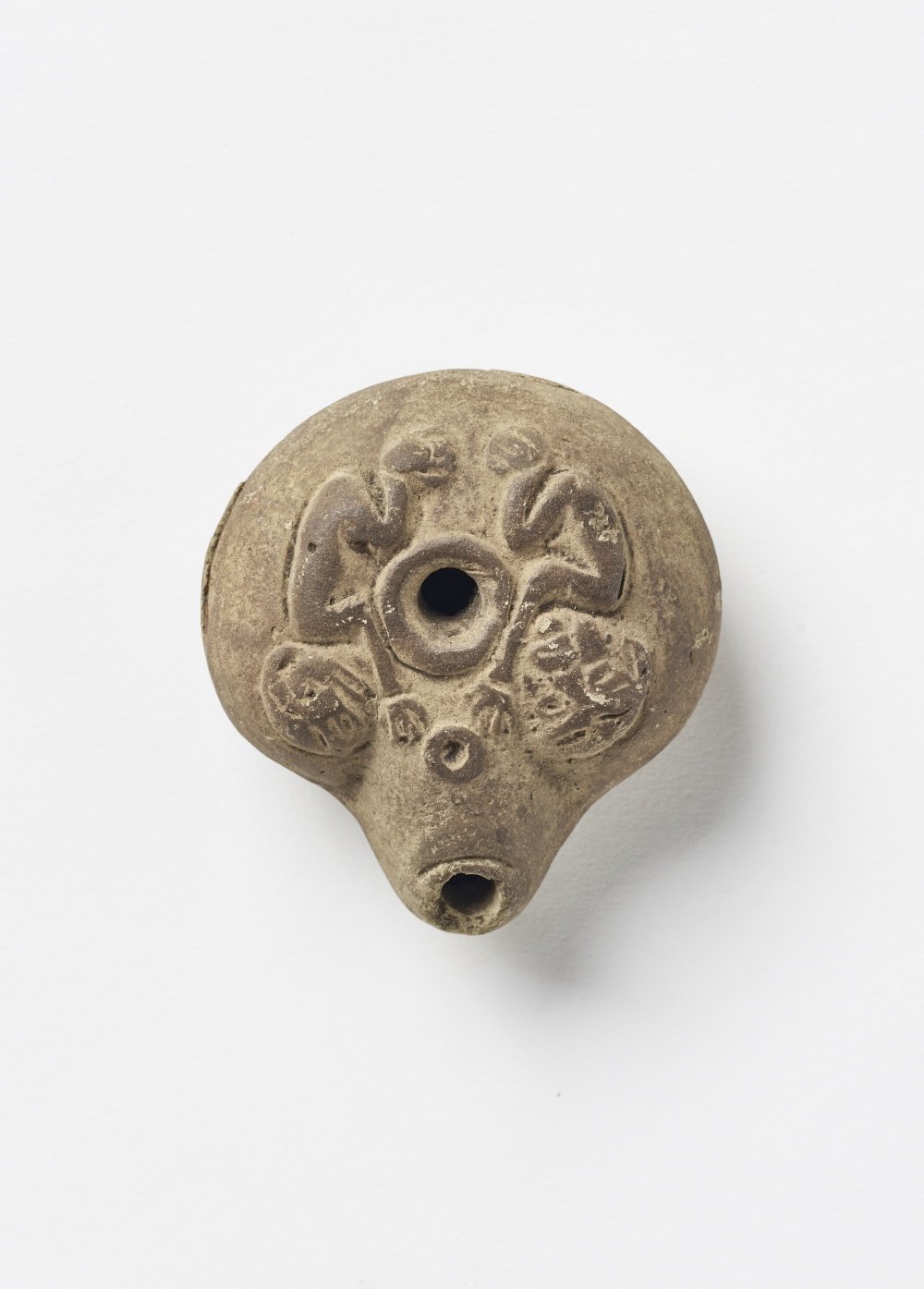The annual Nile flood not only provided nutrient-rich soil, but also washed the frogs ashore. Therefore, the frog was considered a symbol of life and fertility in ancient Egypt. Thus, the Egyptian goddess of childbirth, Heket (also Heqet or Hekit), was also depicted as a frog-headed woman or as a frog.
The type of frog lamps, which took their name from the frogs depicted on the upper rim, developed in Upper Egypt. Other attributes relating to birth could also be depicted, here the unborn even themselves. Their safe birth was to be ensured by the lighting of the lamp and the representation reminiscent of the symbolism of frogs. As such, the frog was also adopted by the early Christians in Egypt. (AVS)
Former collection Friedrich Wilhelm von Bissing
en









